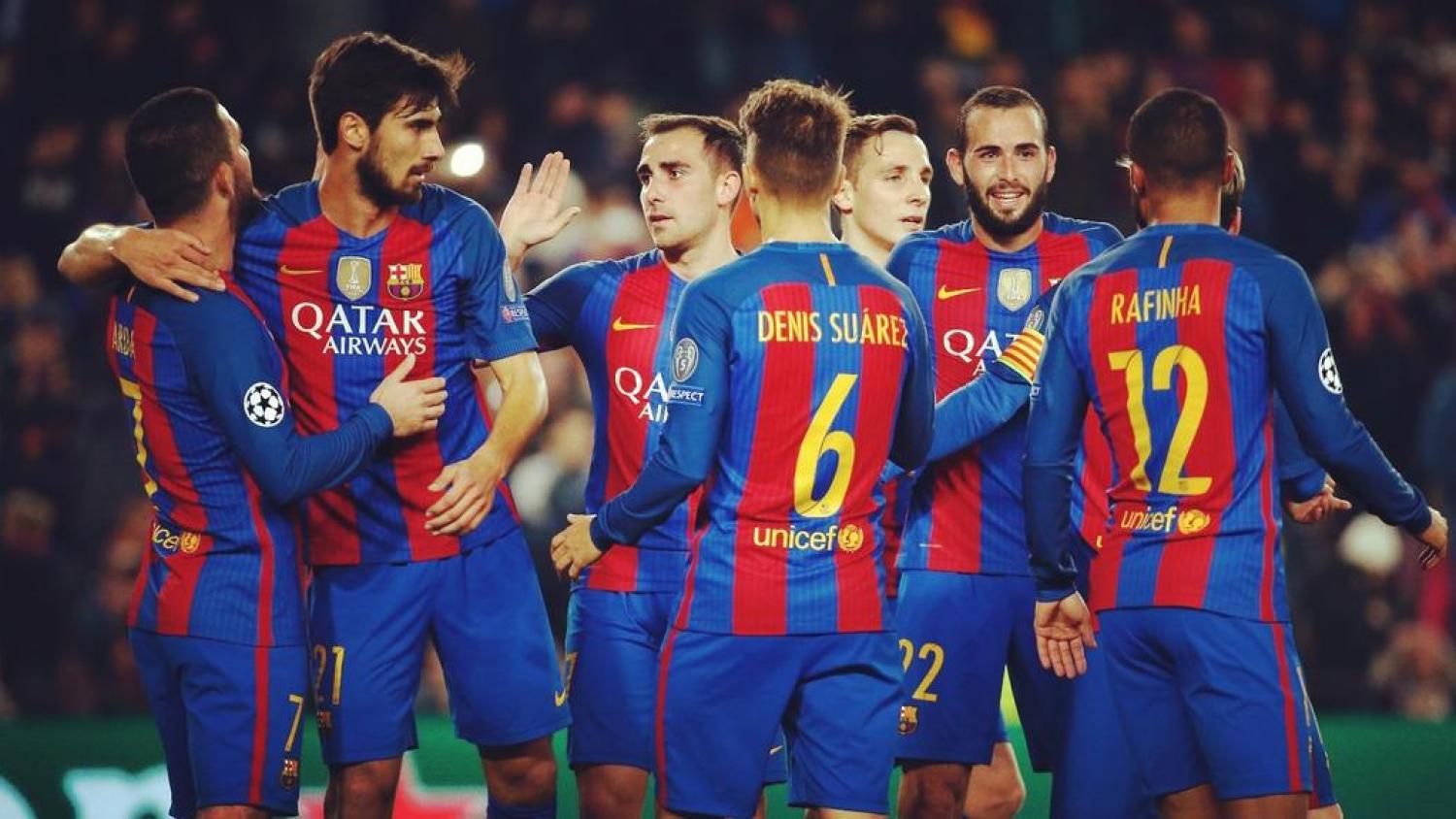There will never be another series of transfers like FC Barcelona’s 2013 and 2014 plundering of some of the best soccer players the world has seen in quite some time. During that Summer of endless spending, Barcelona came away with Luis Suarez, Neymar, Ivan Rakitic, goalies Marc-Andre Ter Stegen and Claudio Bravo and important role players Jeremy Mathieu and Rafinha.
Barcelona had its eyes set on deep domestic and continental runs. While they were mindful of the future, more important was the immediate success of the team. It certainly paid off.
With that incredible haul of talented footballers in blue and maroon, Barcelona had a historic 2014/15 season. The accomplished what soccer clubs only hope for: the treble. They won La Liga by two points, the Copa Del Rey with a 3-1 win over Athletic Bilbao, and the Champions League with a 3-1 stomping of a very strong Juventus side. Messi, Suarez, and Neymar all finished as top-10 goalscorers in both La Liga and the Champions League.
Their 2015-16 season wasn’t as successful, but who can really blame them? Back to back trebles is a pipe dream, and there’s a reason it’s never been done before. Two out of three isn’t too bad, though, right? They won La Liga again, this time by just one point, and they beat Sevilla 2-0 in the Copa Del Rey Final.
They bowed out of the Champions League in the quarter-finals by a hungry, visceral Atletico Madrid team that held the vaunted Barcelona “MSN” attack to just two goals in two games. While the season wasn’t a failure by any stretch of the imagination, the board realized that the future needed to be addressed, especially with so many of their players heading into their late twenties.
As with any other soccer team in the world, they took to the transfer market to reload for the future. With several shrewd moves, Barcelona quietly (relatively, of course) stockpiled a bevy of young talent in one of the more underrated transfer windows in recent memory. Their eyes weren’t on players that were going to help them win a treble this year.
Rather, they focused and keyed in on young players that showed an abundance of potential; some of them from La Liga teams that frustrated and impressed Barcelona when they played each other.
They got back Denis Suarez, who had only played for Barcelona B during his two years there, from Villareal through a buyback clause in his contract. Suarez was coming off a dynamite La Liga year that saw him appear in 33 games for a surprising Villareal team that finished fourth in the league.
They pried Andre Gomes away from Valencia, probably in response to a dominant Euro 2016 campaign that saw him raise the tournament with Portugal. They also took Paco Alcacer from Valencia, a prolific striker who had already been a thorn in Barcelona’s side in the past during their La Liga confrontations.
They signed a pair of juvenile French defenders who were far more experienced than their young looks let on: Samuel Umtiti and Lucas Digne. Both had made their marks in Ligue 1 and contributed during France’s runner-up campaign at Euro 2016. They also signed Jasper Cillessen, Netherlands’ 2014 World Cup goalie, getting younger at the goalkeeper position by swapping him with Claudio Bravo.
Aside from Cillessen, who’s an ancient 27 years old in comparison to the others, the average age of Barcelona’s transfer window players was 22.8. But it wasn’t one of those instances where a club takes chances on young players in hopes of a couple of them panning out in the future.
These were players that had already established themselves in the domestic and international scene, showcasing their talents and not floundering under pressure in some of the biggest stages world soccer has to offer.
Some of these players are also direct replacements for older, slower players that had to make way for the betterment of the team. Bravo had worn out his welcome at Barcelona and Ter Stegen needed to start. Bravo’s departure allowed that and allows Cillessen to take over as Ter Stegen’s backup.
Adrian was 32 and didn’t have much left in the tank. Digne is 23 and is a controlled, cerebral player that has filled in capably as Jordi Alba’s backup and could take over for him in the near future. Xavi’s gap has been felt since his departure in 2015, but Gomes and Suarez have been great in some of the same positions and ways that Xavi used to excel.
Barcelona was lacking a direct backup to Luis Suarez, and they’ve found one in Alcacer, who has plenty to work on at 23 but already has a solid goalscoring record.
If you watched the Champions League match against Borussia Monchengladbach on Wednesday, it was kind of a sobering scene if you’re my age or around my age of 22. The lineup consisted of Lionel Messi, Javier Mascherano, Andres Iniesta, Arda Turan, Aleix Vidal, and all of the summer signings mentioned above.
Messi and Iniesta were the old men in midfield, Mascherano was the captain at the back, and the rest were young players that held their own in the presence of gods. They played with composure, class, and linked up telepathically with veterans that had been at Barcelona for what seems like eons.
I grew into my teen years watching Barcelona play some of the best soccer I’ve seen in my entire life. Those teams featured a young Messi that grew into the greatest player of all time, two ridiculous maestros in Xavi and Iniesta, and young players like Jeffren and Bojan that had no reason to be on the field but were elevated highly by their otherworldly teammates.
These new, young Barcelona players aren’t in the same mold as those two and as Ibrahim Afellay. These young pups are already contributing in their own unique ways, and have set up Barcelona for future success for the next decade.

 Home
Home
